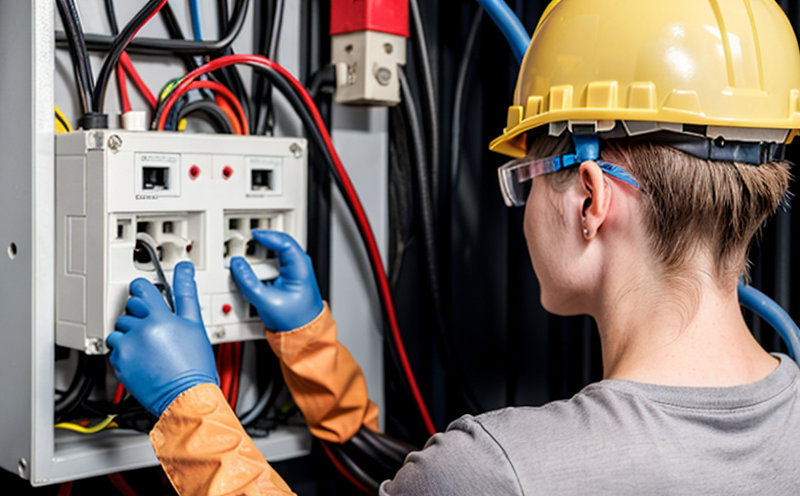IEC 60884 Socket Outlet Safety Testing in Smart Home Installations
The International Electrotechnical Commission (IEC) Standard IEC 60884 sets forth stringent requirements for the safety and performance of socket-outlet devices. In smart home installations, these devices are integral to ensuring both functionality and security. This service focuses on the rigorous testing procedures outlined in IEC 60884 to ensure that socket-outlets meet all necessary safety standards.
Smart homes rely heavily on a variety of electrical appliances and gadgets, many of which connect directly to wall outlets. Ensuring the integrity and safety of these outlets is paramount for preventing fires, electric shocks, and other hazards. The IEC 60884 standard provides a robust framework for testing socket-outlets to ensure they are safe under various operating conditions.
The testing process involves several key steps: initial inspection, functional tests, thermal stability testing, and electrical strength testing. Each step is designed to identify potential hazards that could arise from improper design or manufacturing processes. The initial inspection ensures that the outlet meets all physical specifications as defined by IEC 60884. Functional tests verify that the outlet operates correctly under normal conditions.
Thermal stability testing simulates real-world scenarios where the outlet may experience high temperatures due to continuous use or environmental factors. This test checks whether the outlet can withstand these conditions without compromising its integrity. Electrical strength testing ensures that the outlet can handle the specified voltage and current ratings safely, preventing electrical shocks.
The results of each test are meticulously recorded and compared against the standards set by IEC 60884. Any deviations from these standards are flagged for further investigation or corrective action. This comprehensive approach guarantees that only safe and reliable socket-outlets find their way into smart home installations.
By adhering to IEC 60884, we ensure that the electrical safety of your smart home is not compromised by substandard products. Our team of experts uses state-of-the-art equipment and methodologies to conduct these tests, providing you with accurate and reliable results. This service is particularly valuable for quality managers, compliance officers, R&D engineers, and procurement teams who are responsible for ensuring high standards in their products.
| Application | Description |
|---|---|
| Smart Home Appliances Integration | Ensuring compatibility and safety of smart appliances that connect to wall outlets. |
| New Construction Projects | Meeting regulatory requirements for new residential buildings. |
| Retrofitting Existing Homes | Upgrading existing installations to meet current safety standards. |
International Acceptance and Recognition
The IEC is the leading international organization for standardization in the field of electrotechnology. The IEC standards, including IEC 60884, are widely recognized and accepted across the globe. This ensures that any product tested to these standards will meet the safety requirements set by multiple jurisdictions.
Many countries have adopted IEC standards as part of their national regulations for electrical devices. For instance, the European Union's Low Voltage Directive (LVD) references several IEC standards, including IEC 60884. In North America, products that comply with IEC 60884 can be labeled as meeting UL and CSA requirements.
The acceptance of these standards not only simplifies compliance for manufacturers but also enhances the reputation of compliant products in international markets. By ensuring that your smart home socket-outlets meet IEC 60884, you are demonstrating a commitment to safety and quality that is universally recognized.
This widespread recognition means that any product certified under this standard can be sold and used in multiple countries without the need for additional testing or certification. This reduces costs and time-to-market while ensuring consistent safety standards across different regions.
Use Cases and Application Examples
- Smart Thermostats: Ensuring compatibility with smart home networks and reliable power supply.
- Security Cameras: Providing stable power to maintain video quality and prevent data loss.
- Air Quality Monitors: Maintaining consistent power for accurate readings and timely alerts.
- Smart Lighting Systems: Ensuring seamless operation of lighting fixtures in various settings.





